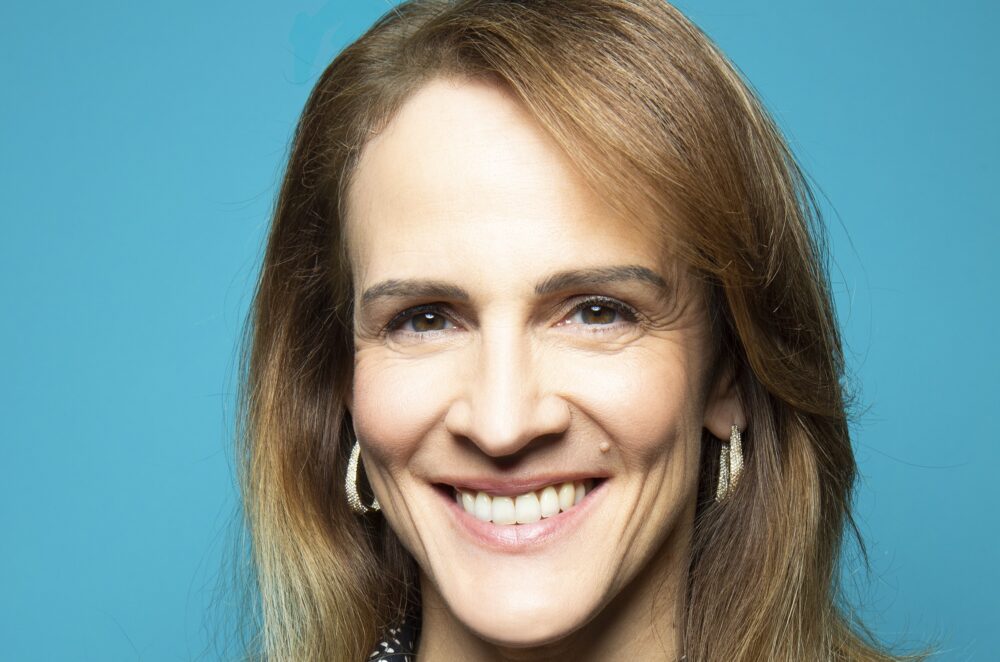Christa Quarles, CEO at Alludo, answers our questions on recruitment, employment and retention in a post-pandemic climate
Businesses are looking towards their post-pandemic futures, has their approach to managing, recruitment and staff retention changed?
I think that if your company’s approach to management, recruitment, and staff retention hasn’t changed over the past few years, it would be shocking. At this point, it’s pointless to force the scrambled egg back into the shell. I was deeply immersed in the traditional style of leadership and business operations for decades. And if someone had told me a few years ago that I’d be leaning hard into remote-first operations, I’d think they were talking about the wrong person. But after two years of pandemic living, we saw first-hand that remote working works. We asked our employees if they wanted to return to the office. 95% said they wanted to remain remote. Today, remote first is now our official policy.
But this is just one example. We’re not just leaning into remote work, we’re also leaning into a flexible, people-centric approach to working. We call it Work3, and it’s not only a new way of working that we’re building for our employees; we’re building it for our customers too.
Work3 is flexible, concerned with outcomes rather than inputs, and obsessed with accountability instead of micromanagement. We hire great people and get out of their way. We give them space to fail. We release control over when, where, and how they work and let them thrive based on their own unique preferences and skill sets. And it has been magical to watch it play out.
Happy, valued employees who have freedom at work are incredibly productive and engaged. They’re innovative. They’re resourceful. They aren’t afraid to challenge norms and push through barriers. I’m data-driven, and the data is telling me that we’re doing the right thing. Not only do we encourage other companies follow suit, but we’re working hard to give them the tools and inspiration to do so.
As mass remote working is now the norm, how this has impacted how businesses organise and manage their staff?
It used to be that engagement was a product of presence and face time. Managers would think, “you’re in your seat at 9 a.m. and don’t leave until 5 or after, so we know you’re committed.” Actually, they didn’t know you’re committed. Many companies made the mistake of confusing presence for productivity. Many still are.
The remote work landscape has forced a paradigm shift for managers. Now, it’s not about who is where and when. Or, at least, it shouldn’t be. No one should have to fake time at work or engagement. I don’t care when you’re on and when you’re not. I just want you to feel empowered and inspired to do your best work on your terms. If you produce great outcomes—by whatever metrics you’re measured on— then that’s what the company needs.
It shouldn’t be a manager’s job to peer over a shoulder, literally or proverbially. And if you feel obligated to micromanage, then either you hired the wrong people or perhaps you’re misguided as a manager.
The flip side of this is that a hands-off, remote management landscape means managers have to find different ways to engage, connect with, and recognize their employees. Remote management means relational skills are more important than ever. It means you need to be deliberate, whether that’s with check-ins where everyone feels safe to be super transparent about their mood and experiences, activities for teambuilding, or coordinating offsites and socialization. The worst possible scenario in this new landscape is a manager who is overly concerned with inputs and not concerned enough with their employees’ well-being and connection. Work is more personal than ever. Great managers realize that.
Much has been written about the importance of reinforcing company culture. How does this manifest with massively dispersed workforces?
Working remotely is a great test of a company culture. Is it possible to be aligned and engaged and connected when you’re not sitting in a conference room next to each other? Definitely. Culture is about what you value, what you reward, and how you connect. It shouldn’t depend on location or proximity.
I always say that culture is the decisions people make when you, as a leader, aren’t in the room. At my company, there are so many rooms that I’m not in at any given moment. And if we include video calls, there are so many of those that I’m not part of. So many email chains. So many chats. I can’t be in all of them and I wouldn’t want to be. My job is to help foster a culture that’s built on psychological safety, empowerment, accountability, and transparency so that everyone has the tools, inspiration, and trust to make the best decisions and do their best work without being micromanaged.
Remote work structures challenge us to create a deeper and more profound sense of connection, because we can’t fake it with proximity. We have to be intentional about creating an inclusive space where everyone feels empowered to bring their whole selves to work and feels safe to risk, to fail, to challenge, and to air concerns. This kind of environment is an amalgamation of all the diverse, unique individuals who are part of that company. Culture must be rooted in some basic, inalienable beliefs, but it is also dynamic and reflects the ideas and perspectives of the people who work here.
Businesses need to be agile to meet customer demands. Workforces want flexibility. What do these drivers mean for operations and management?
This question is posed as though these elements are dichotomous, but I don’t think that’s the case at all. In fact, I think they’re remarkably complementary. Our flexible approach to work means that we have people who shine at different times of day and even on different days. Based on our unique working styles and preferences, we have someone engaged and responsive across a wide variety of time zones, representing a diverse array of capabilities and skill sets.
We’re big on accountability and ownership, and we don’t have to force it. When needs crop up, people claim them because they have the cycles and ability to do so. In short, we are agile because we’re flexible. We’re responsive because we’re accountable. Without dictating that people work at set hours or times, we’ve created a massive amount of forward momentum. And our customers reap the benefits.
Are businesses turning to technology to help them build, manage and nurture next-generation workforces?
It’s nearly impossible to overstate the importance of technology in building, managing, and nurturing workforces. And while this question is specific to “next-generation workforces,” I would say that everyone in this new world of work in a next-generation employee. As knowledge workers, we are overwhelmingly dependent on technology to do our jobs. That was true prior to the pandemic-induced shift to remote work, and is exponentially more relevant now.
Technology has brought a sense of boundlessness that’s exactly what we’re working toward at Alludo. With our recent rebrand, we are embracing an unrestrained spirit, alive with ingenuity. I love the attitude of, “Why can’t we do this? Let’s try!” I think that attitude is alive and well with our employees, and it’s very much fuelled by technology.
Technology enables the flexibility that we’re all craving at work. We can harness sparks of inspiration or connect instantly with a colleague who is on the other side of the world. We can reach wider audiences and build on collective knowledge faster than ever. At Alludo, we use technology to enable people to create, ideate, and share, easily and boundlessly. We wouldn’t be here without it.
What is the key to unleashing innovation, momentum, and purpose as a business leader?
It’s perhaps counterintuitive, given that I’ve just talked at length about boundlessness, but I’ve found that great leadership is about focus and constraint. The reality is that most companies that fail do so by overstretching and trying to do too much. That’s why I believe my greatest strengths is working with constraints.
Constraints are the foundation of innovation and true creativity because they provide focus. One downside of this incredible modern technology is that when anything is possible, organisations can become scattered. Why put effort into one pathway when you can barrel at high speeds down a hundred of them?
But at some point, to ensure momentum, something has to give. In an economic reality that places limits on resources, focus is key to solid leadership. For me, I use a technique I call Management by Haiku. This form of poetry that originated in Japan relies on a set structure and contains only 17 syllables. Haiku’s power is not in spite of its constraints but because of those constraints. Haikus are laser-focused, clear, and clean.
My take: If I can’t articulate my vision—either for the company overall or for a specific initiative—with as much constraint as a Haiku, it’s too scattered. Back to the drawing board. This notion is constantly in my head as I clarify and narrow down my vision and purpose. This structure forces clear decision making. It means you can throw your whole weight behind what you prioritise, because you’ve relentlessly carved away anything that doesn’t truly matter.
When you manage by Haiku, your team knows that when you share a vision or purpose, you mean it. You aren’t going to be flippantly tossing around ideas for them to chase after in hopes that one of them might go somewhere. When everyone has the same, clearly articulated North Star, it is easy for your team to focus on the priorities. As a leader, you’re ensuring alignment and clear decision making. You’re creating a culture that’s truly like you’re ‘always in the room.’


